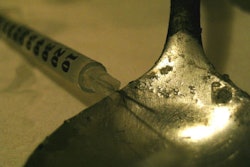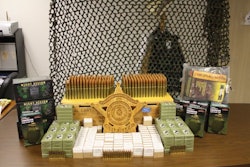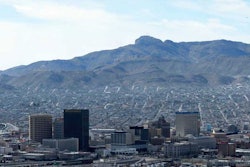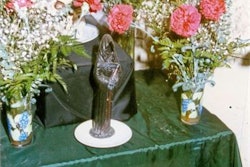Editor's Note: View our "ID Forgery Kit" photo gallery for examples of forged documents seized by law enforcement officers.
One of the uncounted consequences of the American justice system's tolerance of the massive illegal immigration movement is the damage done to law enforcement's ability to properly identify suspicious people.
The American system of documents used to identify people is completely compromised. Short of DNA, fingerprints or a retinal scan, the truth is that we must rely on a state driver's license, Social Security number, passport or some other immigration document to identify individuals.
When human traffickers began moving large numbers of people into the United States after World War ll, they offered counterfeit documents to assist these newly arrived immigrants in assimilating and obtaining employment. The Chinese merchants, who could be found in every major city throughout the world, seemed to specialize in these counterfeit documents. It wasn't long before Europeans and Latin Americans joined the legal and illegal flood of immigration into the U.S. armed with everything from crude to sophisticated counterfeit papers.
As technology advances and becomes more widely available to the general public, the abilities of counterfeiters improve. Advanced computers, scanners, and color printers make counterfeit detection much more difficult. Like good counterfeit currency, most false documents pass routine inspection and only the crude examples are detected.
This is further complicated when false birth certificates, immigration documents or state drivers' licenses or identification cards can be used to obtain real identification documents. The huge profits involved in human trafficking have also given human smugglers the ability to bribe government workers and compromise official document systems.
False documents today are commonly sold in sets. A set includes a driver's license, Social Security card, and some type of immigration document. In Los Angeles, the three largest street gangs control the production of these documents on the street. A set can be purchased on the street near MacArthur Park near downtown for as little as $75. If you spend more, you can buy a set of counterfeit documents that would pass almost any inspection and may include a motor vehicle license with a history and usable passport.
In the late 1980s, I began to come across blank counterfeit documents and false documents in the possession of Los Angeles gang members. I contacted an old friend from the DMV (Department of Motor Vehicles), Ray Fimbres. Ray has qualified in both states and federal courts as an expert in counterfeit documents.
Investigator Fimbres worked undercover, buying false documents and the software used to provide them. He also investigated internal violations at the DMV. I learned that counterfeiters bought computer information from DMV employees to build histories for higher-end false documents. They got DMV employees to steal documents and stock.
Not only did gang members falsify driver's licenses but vehicle registrations and insurance information for stolen vehicles. After arresting them, Ray often found it frustrating that the courts were so lenient in sentencing the counterfeiters and their illegal-alien clients. Even the DMV rarely prosecuted its employees who were caught cooperating with counterfeiters.
Once Ray worked his way up to come into contact with a high-level forger, who wanted to sell him a sophisticated computer program for state driver's licenses from all 50 states; it even had police credentials from 50 states and FBI identification. The Mexican forger was asking for about $1,500 for the program. The California DMV bosses said it was too much money to risk. So that bad guy is probably still out there forging fake ID's and maybe police credentials.
To get one of these false IDs, you first go to one of the numerous passport photo shops, which are legal. A photograph is taken, and you deliver this photo to the counterfeit ID vendors. They scan the photo and produce the "set" in any name you might desire, the background color is changed to fit digitally to fit the requirements of the documents requested. In a few hours, the false documents are delivered.
The Mexican Mafia prison gang taxes the income derived from these "Mica Mills" (illegal document mills). The largest ones are run by the Florence 13 gang in south east and south central Los Angeles; the 18th Street gang and Mara Salvatrucha gang control the Pico Union area, Hollywood, some parts of southeastern and most of central L.A.
When the major Mexican Mafia members were arrested in Los Angeles in 1995 during the RICO case, all of them carried good false IDs. Unfortunately for them, we had been surveilling them for many months and recognized them no matter what their ID said. But how many times had some unsuspecting patrol officer stopped one of these dangerous men and been fooled by their phony documents?
In 2002, a L.A. Sheriff's deputy working in Norwalk saw an obvious gang member walking in a residential area alongside a female. Dressed in a "wife beater" T-shirt and khaki pants, he had the classic shaved head and lots of prison tats. The deputy stopped him, and the thirtysomething gangster identified himself as "Jorge Gonzales."
However, the deputy could see that a tattoo across his back read Hernandez not Gonzalez. "It's my homeboy's name," he claimed. The female asked for permission to return to her residence and return with a valid California driver's license in the name of Jorge Gonzalez.
The deputy requested his patrol sergeant and the ID in Gonzalez's name was checked. The officer verified the information with DMV via his radio. "No wants or warrants on your subject," said the radio dispatcher.
Our smart deputy was not buying the subject's explanation of the tattoo as a homeboy's memorial, or the suspect's mother's maiden name. The patrol sergeant suggested letting Gonzalez or Hernandez go. After all, his warrant check had seemingly come back negative.
The warrant check was based only on information derived from suspect documents; the deputy knows his recognition of prison tattoos is at odds with the gangbanger's explanations and driver's license. Annoyed, the sergeant consents to allow the deputy to bring the subject into the station for further attempts to confirm his true identity.
Before the watch commander could order the deputy to release the mysterious gangster, an electronic scan of his fingerprints revealed that he was indeed a wanted ex-con and felon named Hernandez.
The worst abuses occur in the Social Security system. In the early 1990s, I went to see the head of Social Security in San Diego, Calif. I told him we were recovering 600-Series Social Security cards, and this was impossible since the 600 SSN had not been officially issued. In addition, it was common to have several people in the U.S. using the same Social Security number.
In fact, I had discovered that my own SSN had been used by two other people unknown to me. I was notified of this by the Social Security Administration. A quick review of my SSN records would show that I had been issued this number in the 1960s and had continued to contribute to the account since that time. Any new users on this account must be using falsified documents.
So why couldn't the Social Security Administration recognize these 600 Series numbers or numbers already identified with an American citizen? I learned that the system was already hopelessly compromised. The administration doesn't have the manpower or inclination to police a system drowning in abuses.
In June of 2003, Colorado congressman and future presidential candidate Tom Tancredo presented a notebook full of counterfeit documents to Congress during the hearings on immigration. I had compiled this notebook from documents captured in cases handled by my Los Angeles Sheriff's Department team, DMV investigators and California paroles sources.
Examples of counterfeit California driver's licenses (with new anti-forgery format), Social Security blanks, resident alien cards and other immigration documents, sophisticated counterfeit birth certificates, as well as Mexican identification blanks were included. Holograms and plastic lamination sheets were also part of the notebook. All of these items could and can be found for sale on the streets of Los Angeles and any other big city.
















